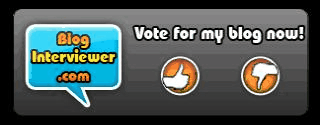So, let's get back to talking about my new book, shall we?
So, back on September 8th we had a book launch event at The Players in Manhattan, hosted by the New York Society for General Semantics. The event was held under the heading of Media Ecology and the Human Condition: A Reading and Conversation with Lance Strate, and was quite well attended for a NYSGS program. The write-up for the event included the following:
And here are some photos taken by representatives from the publisher, Peter Lang, who were present:
But we can do better than that! As you many know, we try to record every NYSGS program, and that includes this one. So you can get a sense of the conversation that took place, some of my readings, and the question and answer session that followed:
As this was an NYSGS event, there was more of an emphasis on general semantics than you might find on other occasions. And I will be doing a book signing at the upcoming National Communication Association's annual meeting, in Dallas, Texas, on Friday, November 17th, from 2:45 to 3:15 PM. Look for me at the Peter Lang table in the exhibition hall!
Following the signing, there will be a program session on my book with commentary and reviews by Thom Gencarelli, Ronald Arnett of Duquesne University, Janie Harden Fritz also from Duquesne, and Robert Craig of the University of Colorado, Boulder. Ed Tywoniak of Saint Mary's College of California will be chairing the session, and I'll be responding to the panelists, responding to the responses, as it were. If you will be at the conference, this program is listed as taking place on the 3rd floor of the Marriott, in the Champagne Room (I suppose that's fitting in some way).
And there's one last look at the pile of books from the book launch, before they were all sold out! Many thanks to everyone who came out that evening, especially those who bought copies, and to the New York Society for General Semantics, for a memorable evening and event!
😃 😃 😃 😃 😃 😉 😉 😃 😃 😃 😃 😃
So, back on September 8th we had a book launch event at The Players in Manhattan, hosted by the New York Society for General Semantics. The event was held under the heading of Media Ecology and the Human Condition: A Reading and Conversation with Lance Strate, and was quite well attended for a NYSGS program. The write-up for the event included the following:
Our first event of Fall 2017, held on September 8th, featured a book launch for Media Ecology: An Approach to Understanding the Human Condition (New York: Peter Lang, 2017) by Lance Strate, published on July 4th. Dr. Strate is Professor of Communication and Media Studies at Fordham University, a Trustee of the Institute of General Semantics, and the President of the New York Society for General Semantics.
Thom Gencarelli, Professor of Communication at Manhattan College and a Trustee of the Institute of General Semantics hosted the event, which included a conversation, discussion, reading, book signing, and reception....
It was a gathering and celebration that was most certainly stimulating and thought-provoking!
And here are some photos taken by representatives from the publisher, Peter Lang, who were present:
But we can do better than that! As you many know, we try to record every NYSGS program, and that includes this one. So you can get a sense of the conversation that took place, some of my readings, and the question and answer session that followed:
As this was an NYSGS event, there was more of an emphasis on general semantics than you might find on other occasions. And I will be doing a book signing at the upcoming National Communication Association's annual meeting, in Dallas, Texas, on Friday, November 17th, from 2:45 to 3:15 PM. Look for me at the Peter Lang table in the exhibition hall!
Following the signing, there will be a program session on my book with commentary and reviews by Thom Gencarelli, Ronald Arnett of Duquesne University, Janie Harden Fritz also from Duquesne, and Robert Craig of the University of Colorado, Boulder. Ed Tywoniak of Saint Mary's College of California will be chairing the session, and I'll be responding to the panelists, responding to the responses, as it were. If you will be at the conference, this program is listed as taking place on the 3rd floor of the Marriott, in the Champagne Room (I suppose that's fitting in some way).
And there's one last look at the pile of books from the book launch, before they were all sold out! Many thanks to everyone who came out that evening, especially those who bought copies, and to the New York Society for General Semantics, for a memorable evening and event!

















